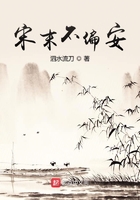The ravens and wolves soon came in for their share of the good cheer. These constantattendants
of the hunter gathered in vast numbers as the winter advanced. They might be completely out ofsight,
but at the report of a gun, flights of ravens would immediately be seen hovering in the air, no oneknew whence they came; while the sharp visages of the wolves would peep down from the browof
every hill, waiting for the hunter's departure to pounce upon the carcass.
Besides the buffaloes, there were other neighbors snow-bound in the valley, whosepresence did
not promise to be so advantageous. This was a band of Eutaw Indians who were encamped higherup on the river. They are a poor tribe that, in a scale of the various tribes inhabiting these regions,would rank between the Shoshonies and the Shoshokoes or Root Diggers; though more bold andwarlike than the latter. They have but few rifles among them, and are generally armed with bowsand
arrows.
As this band and the Shoshonies were at deadly feud, on account of old grievances, and asneither
party stood in awe of the other, it was feared some bloody scenes might ensue. CaptainBonneville,
therefore, undertook the office of pacificator, and sent to the Eutaw chiefs, inviting them to afriendly
smoke, in order to bring about a reconciliation. His invitation was proudly declined; whereuponhe
went to them in person, and succeeded in effecting a suspension of hostilities until the chiefs ofthe
two tribes could meet in council. The braves of the two rival camps sullenly acquiesced in thearrangement. They would take their seats upon the hill tops, and watch their quondam enemieshunting the buffalo in the plain below, and evidently repine that their hands were tied up from askirmish. The worthy captain, however, succeeded in carrying through his benevolent mediation.
The
chiefs met; the amicable pipe was smoked, the hatchet buried, and peace formally proclaimed.
After
this, both camps united and mingled in social intercourse. Private quarrels, however, wouldoccasionally occur in hunting, about the division of the game, and blows would sometimes beexchanged over the carcass of a buffalo; but the chiefs wisely took no notice of these individualbrawls.
One day the scouts, who had been ranging the hills, brought news of several large herds ofantelopes in a small valley at no great distance. This produced a sensation among the Indians, forboth
tribes were in ragged condition, and sadly in want of those shirts made of the skin of the antelope.
It was determined to have "a surround," as the mode of hunting that animal is called. Everythingnow
assumed an air of mystic solemnity and importance. The chiefs prepared their medicines or charmseach according to his own method, or fancied inspiration, generally with the compound of certainsimples; others consulted the entrails of animals which they had sacrificed, and thence drewfavorable
auguries. After much grave smoking and deliberating it was at length proclaimed that all whowere
able to lift a club, man, woman, or child, should muster for "the surround." When all hadcongregated,
they moved in rude procession to the nearest point of the valley in question, and there halted.
Another
course of smoking and deliberating, of which the Indians are so fond, took place among thechiefs.
Directions were then issued for the horsemen to make a circuit of about seven miles, so as toencompass the herd. When this was done, the whole mounted force dashed off simultaneously, atfull
speed, shouting and yelling at the top of their voices. In a short space of time the antelopes,started
from their hiding-places, came bounding from all points into the valley. The riders, now graduallycontracting their circle, brought them nearer and nearer to the spot where the senior chief,surrounded
by the elders, male and female, were seated in supervision of the chase. The antelopes, nearlyexhausted with fatigue and fright, and bewildered by perpetual whooping, made no effort to breakthrough the ring of the hunters, but ran round in small circles, until man, woman, and child beatthem
down with bludgeons. Such is the nature of that species of antelope hunting, technically called "asurround." [Return to Contents].















